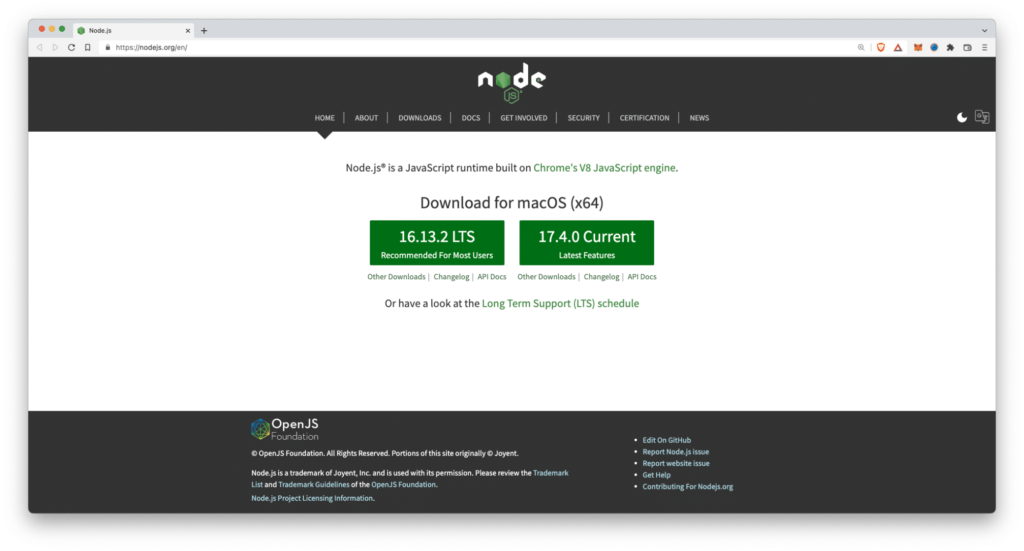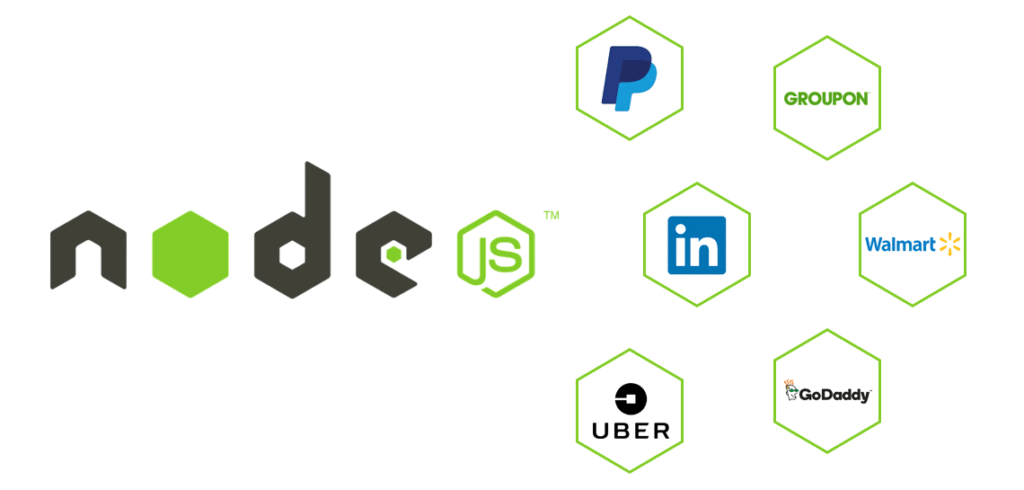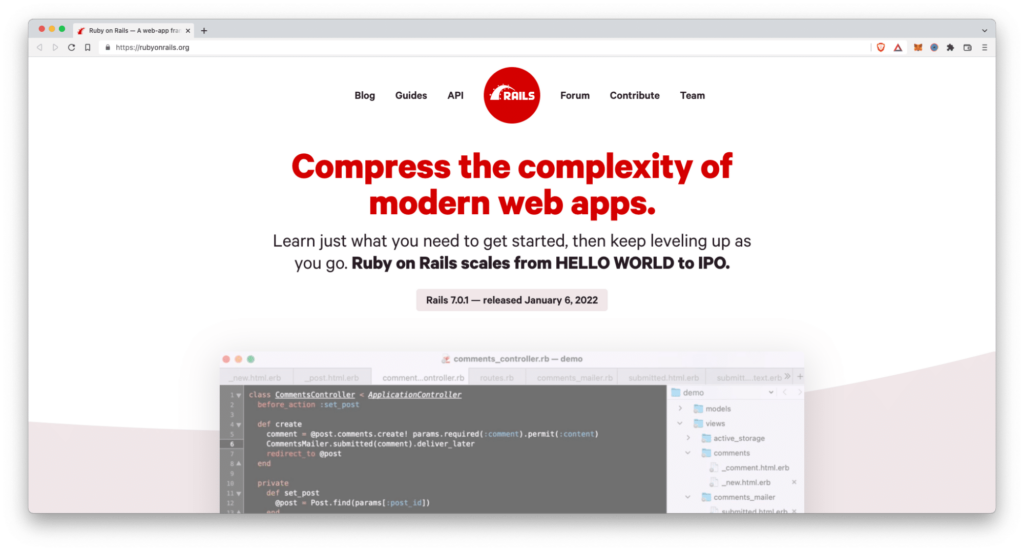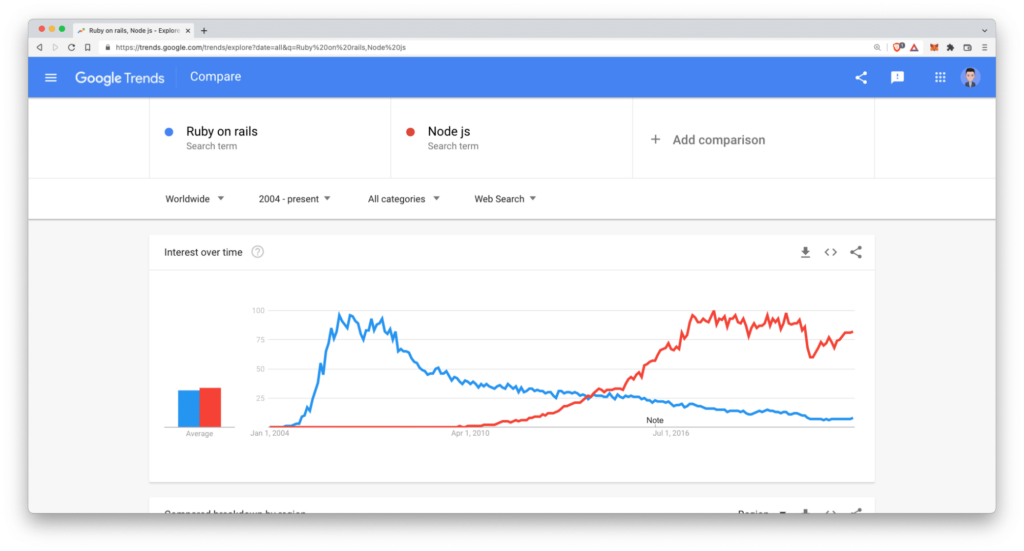Choosing a framework or language for your project can be challenging, especially on the backend, where maintaining user data and creating APIs and libraries are key. The most popular web development technologies at the time of writing are Node.js and Ruby on Rails.
Choosing one of them can be a difficult task. Both of these technologies have advantages and disadvantages, and understanding them will help you choose the best choice for your project. We’ll provide you an unbiased comparison of Node.js versus Rails in this article to help you decide.
Why are we comparing these two technologies? Although they may not seem directly analogous, we’ve noticed plenty of users who have raised the question of Ruby on Rails vs Node.js online. This article will help answer that question by looking at key clarifying features, main differences, and use cases for each technology.
Let’s get started!
What Is Node.js?
Node.js is an open-source runtime environment built in 2009 on Chrome’s V8 JavaScript engine. It is a single-threaded and cross-platform which is widely used in backend development.

Node.js can be installed on different platforms such as Linux, macOS, and Windows. It’s used to create a variety of applications, including real-time chat apps, REST API servers, command line applications, and more.
How Node Handles Libraries
Node.js has built-in support for library management, called the Node Package Manager (npm). With over 1.3 million packages and over a billion downloads per week, it is easily one of the most popular package libraries, and as such, it plays a vital role in the JavaScript ecosystem.
This enormous library is completely open source and free. These libraries are rapidly growing in size, making the Node.js community stronger with each passing day.
One of the most popular libraries in npm is Express.js, a framework for rapidly developing and deploying applications and APIs. It’s a minimal Node.js web application framework that offers a comprehensive range of capabilities for both online and mobile applications, and it sees more than 22,000,000 downloads via npm each week.
Here’s the code for a simple Node.js and Express API:
const express = require('express')
const app = express()
app.get('/', function (req, res) {
res.send("A simple GET response")
})
app.listen(3000)In the above code, we are importing express.js and creating a simple GET API. In the last line, we are passing 3000 to listen function, this way, our application will run on port 3000.
Express.js makes it simple to create various types of web apps in a short amount of time. For client requests, the framework provides a simple routing system. It also includes middleware that’s in charge of making decisions in offering the correct responses to the client’s requests.
Companies that Use Node.js
Some of the popular companies that use Node.js are:
- Netflix: Netflix began utilizing Node.js to enable high-volume web streaming to over 182 million users, also they intended to expand their use of Node.js to include content production.
- Uber: Because of its asynchronous primitives and simple, single-threaded processing, Uber’s core trip execution engine was originally developed in Node.js.
- PayPal: When replacing Java, PayPal chose to employ JavaScript from the browser all the way to the backend server for web applications.
- NASA: After an unpleasant occurrence in space, NASA decided to use Node.js to better secure their data and even prevent loss of life.
- LinkedIn: Due to its scalability and performance efficiency, Linkedln chose Node.js and stopped using Ruby on Rails.

Node.js is particularly well-suited to writing systems that have all their state in memory.
—Kris Kowal, Software Engineer at Uber
What Is Ruby on Rails?
Ruby on Rails — also known as Rails or RoR — is the most popular open-source web application framework written in Ruby under the MIT license. Developed in 2004, it is known for its code efficiency and high speed.

Rails was intended to help in the management of routine, internal logic, data computing, and other tasks. It’s a web application framework that’s well suited for database-backed MVC web applications and metaprogramming. Ruby’s original heresy was indeed to place the happiness of the programmer on a pedestal. ~ David Heinemeir Hanson, creator of Ruby on Rails Most web servers that support CGI can run Rails. MySQL, PostgreSQL, SQLite, SQL Server, DB2, and Oracle are all supported by this framework. What’s more, Ruby on Rails has a clear, concise, and flexible syntax that is similar to the English language. This lower learning curve makes the framework particularly attractive to newcomers.
Companies that Use Ruby on Rails
Some of the popular companies that use Ruby on Rails are:
- Airbnb: Airbnb has used Ruby on Rails since its inception. The framework plays a vital role in Airbnb’s tech stack.
- GitHub: GitHub’s backend is Ruby on Rails, with over 200 million code repositories and 32 million monthly users. It’s been seven years since the app was established by the company’s founders.
- Shopify: Shopify is a great example of a sophisticated yet well structured and user-friendly Ruby on Rails ecommerce platform, with over 820,000 sellers using their service.
- Fiverr: Yes, Fiverr also adopted Ruby on Rails at launch, and it’s still the technology that powers their online service marketplace.
Now that you have a good understanding of these two technologies, let’s discuss their pros and cons.
Ruby on Rails: Pros and Cons
Although it’s a feature-packed, powerful framework, Ruby on Rails does have some drawbacks.
Pros of Ruby on Rails
There are numerous advantages to using Ruby on Rails. We’ve listed the top ones below:
- Development speed: RoR’s well-developed architecture of modules, efficient package management system, and expressive and compact characteristics of the Ruby language allow developers to create applications quickly.
- Big Infrastructure: Ruby on Rails comes with a built-in web server and a database with generators to make website development a breeze.
- Large community: Another great thing about Ruby on Rails is its strong and active community. It’s among the popular frameworks on GitHub, and the Ruby community has likely already implemented all of the functionalities you can think of.
- Best practice: Rails was created with the goal of establishing best practices for web development, and it comes with all of the necessary libraries and modules for following these standards in development projects.
- Code quality: The quality of third-party Ruby code is significantly higher than in other languages.
Cons of Ruby on Rails
Some of the cons of Ruby on Rails can be seen below:
- Less flexibility: Customizing Ruby on Rails to create a one-of-a-kind application with unique features might be difficult.
- Runtime speed and performance: One of the most common arguments against Ruby on Rails is its poor runtime speed, which makes scaling your applications problematic. This was also the reason why Twitter stopped using Ruby on Rails for its search engine.
- Boot speed: Most developers complain about Rails’ boot speed. It can take a long time to get started, depending on your number of gem dependencies and files.
- Difficult debugging: It can be tough to troubleshoot a Rails application due to Ruby on Rails’ complexity and various layers. Finding an error in the mix can take a long time.
Pros and Cons of Node.js
Node.js is known to be a flexible framework that can be shaped to suit almost anyone’s needs. However, it too has its drawbacks.
Pros of Node.js
We’ve listed our top picks of Node.js’s advantages:
- Easy to learn: Because Node.js is based on JavaScript, it may be much easier to learn if you already have a good programming background and are familiar with JavaScript. There are numerous courses and tutorials available to make learning enjoyable.
- Community: An engaged community means a lot of support and feedback. Node.js is surrounded by a large developer community. npm, Node’s package manager, is one of the most popular and rapidly expanding software registry. It provided numerous libraries and reusable templates that you can use in your project.
- Seamless JSON support: While other backend technologies, such as Ruby on Rails, can communicate using JSON format, Node.js does so without converting between binary models and instead uses JavaScript. This is extremely useful when creating RESTful APIs with a NoSQL database, such as MongoDB.
- Highly extensible: Node.js is known for being highly extendable, which means that developers can customize and extend it to meet the needs of their projects.
Cons of Node.js
Here are some of Node.js’s disadvantages, which may make it a less suitable choice for your project:
- Unstable API: Node.js suffers from incompatible API changes on a regular basis. These incompatibilities lead to heavy code changes, which is the main downside to using Node.js.
- Immaturity of tooling: Although the core Node.js modules are quite reliable, many of the packages in the npm repository are of poor quality and poorly documented. As a result, finding the right package for your needs may be difficult.
- Not suited for CPU-intensive tasks: The inability of Node.js to process CPU-bound operations is the other major drawback it has right now. It’s only for I/O-related tasks (like web servers).
- Callback issue: Callbacks, the functions that run when each task in the queue is completed, are a big part of Node.js. The quality of code is directly impacted by keeping a number of queued processes in the background, each with its own callback.
Node.js vs Ruby on Rails: Head-to-Head Comparison
Now that you have a good understanding of these two technologies, let’s go deeper and compare them side by side.
Performance
While performance might not be a factor for small projects, it is very important to consider when building large and complex projects. Node.js wins when it comes to performance. Node.js comes with the V8 engine designed by Google and it is much faster, especially on IO heavy operations. It’s also known for producing extremely fast and scalable programs because it employs event-driven architecture and non-blocking (asynchronous) processes that run on a single thread. Node.js apps can also handle more requests due to the framework’s ability to manage heavier server workloads.
Community
When it comes to finding support and input, both of these technologies have a vast community of developers around them.
According to a developer survey by Stack Overflow, Node.js is among the top technologies used by developers around the world. Some of the tech giants such as Google, Facebook, and Amazon made significant contributions to the Node.js environment. Several community forums are available for Node.js, such as Github, Stack Overflow, and Reddit.
Similarly, Ruby on Rails has a huge and strong community too, with huge repositories on GitHub. It has more than 4,000 active contributors on GitHub and lots of other active community forums. Rails developers are actively engaged in the improvement of the existing functionalities and new feature development. They frequently update the source code, fix bugs, and address security vulnerabilities.
Rails also has many community forums, including GitHub, Slack, and Stack Overflow. Their Slack community has over 17,000 members and 27 channels from all over the world, including avid OSS contributors, full-stack engineers, startup founders, backend engineers, and people just learning Ruby on Rails.
Job Opportunities
Since both of these technologies have large communities of users, there are lots of job opportunities for Node.js and Rails developers alike. The average salary of a Node.js developer in the United States is between $71,000 and $92,000, whereas in Europe it falls between $24,000 and $94,000. And Node.js freelancers can make around $80–100 per hour on average. According to Indeed, a Ruby on Rails developer can make around $116,000 per year in the United States; the average salary of a Rails freelancer is around $49 per hour.
Scalability
Node.js is used to create apps that are very scalable. Multiple concurrent requests are handled via the non-blocking I/O and event-driven paradigm.
Node.js is ultimately more scalable than Ruby, thanks to the cluster module. The process is spawned in clusters with abstractions based on the workload of the program with the fewest number of CPUs.
Scaling Ruby on Rails is achievable, but it requires more resources than some of the other popular backend frameworks. However, this shouldn’t stop you from using Ruby on Rails on your project.
Here are some tips to scale your Ruby on Rails application:
- Rails’ built-in action, page, and fragment caching may be used to its maximum potential. You can also use Memcache to cache results from your database that would otherwise be retrieved.
- You can also utilize third-party tools like Docker and Kubernetes to help you expand your application smoothly.
- Make load tests a standard element of your pre-deployment procedure. This will allow you to observe how long each procedure takes and where there is room for improvement.
Popularity
The popularity of your stack is another factor that you should consider while building a modern product or application. In general, the more popular it is, the better supported it will be.
According to Google Trends, Ruby on Rails was quite popular from 2005 to 2009, but since then, it has slowly begun to fall out of favor. Node.js, on the other hand, has been gaining popularity since 2017, which means that there are a lot of people who want to utilize and learn more about it.

If you’re looking for the most popular option at the time of writing, Node.js is your winner.
Node.js vs Ruby on Rails: Which Should You Use?
Now that we’ve discussed the details of Ruby on Rails vs Node.js, it’s decision time! Let’s take a last look at which framework might be best suited to which projects.
When To Use Node.js
Node.js is a good choice if you want to build a real-time application that needs to manage a lot of concurrent requests and data between client and server, such as chat apps or video calling apps. If you’re concerned about performance or scalability, you should first turn Node.js before moving on to Ruby on Rails.
When To Use Ruby on Rails
Ruby on Rails is an excellent solution for CPU-intensive applications where rapid development is required. Rails is an especially good choice if you want to build an ecommerce platform or a social networking site that can handle a lot of traffic.
Summary
Both Node.js and Ruby on Rails are powerful frameworks for websites and apps. It can be very challenging to choose one as a winner. Developers and startup owners have to consider their business models and analyze the pros and the cons of both technologies.
If your concern is about performance or scalability, Node.js could be a very good choice. On the other hand, if you want to build an application that can handle a heavy amount of traffic and CPI-intensive tasks, Ruby on Rails may be the better framework for you.
Do you plan on using Node.js or Ruby on Rails for your next project? How did you decide between them? Let us know in the comments section below!



Leave a Reply